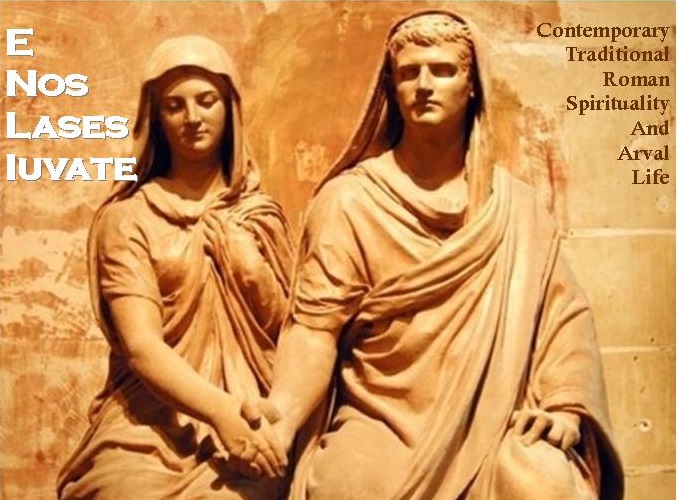The Traditional Roman Religion is a Festive Religion by definition.
In order to understand such concept it can be useful to remind the focal role of the Sacred Time based on a mystical-mythical-religious "sense of phases". At a first level this sense is linked to the great periods of life, to the cyclical changes, to the "decisive passages of value". At a higher level peculiar macro and micro cosmic transition phases and life subdivisions can be identified: these phases must be marked through cults and rites and they must be evidenced along the uniform course of the becoming. It is important also to remind the traditional definition of Cosmos as the reality of the world in a defined phase which embraces the validity of a defined spiritual order.
The Sacred Calendar is based on these principles.
A biological time and phases are accompanied by Cosmic Time and Phases. These phases are observed and recorded. This sense of the phases which characterizes the Cosmic dynamic (both at macro and micro level) identifies some peculiar moments: religion highlights these moments evolving this sense into a "sense of festivity". A festivity is thus a specific mark in the Sacred Time, a demarcation between two ordinary conditions of time.
A Traditional Festivity, to become as such, must be something absolutely discriminating. Thanks to rites, some acts can be made which must be peceived and executed in a level of the human existence completely different from the ordinary one. These rites and acts, when deprived of this spirit, are totally out of the festivity sphere losing consequently their meaning.
In order to attribute a meaning and a sense to certain acts, they must be executed only "festivelly", only on this different level. It implies a personal inner need of elevation towards this level otherwise a festivity is "dead" and grotesque: without a sense of festivity, there's no festivity.
The sense of festivity is not always joyful: it can be also sad or serious.
Festivities in the traditional Roman Religion are never forms of entertainment because they are and remain an absolute "discrimination".

